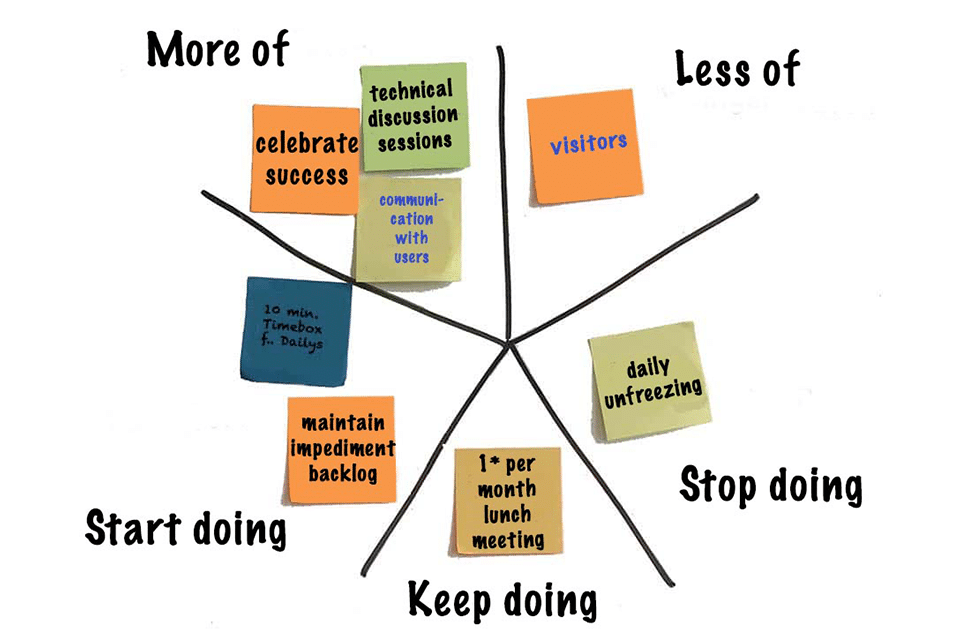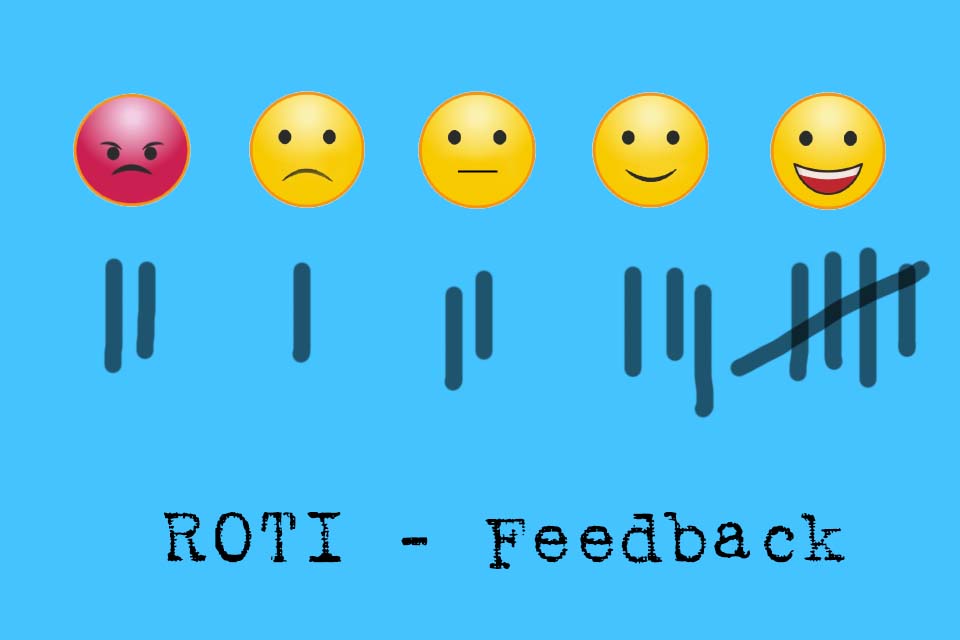What is a 3-Wishes Checkout?
Smartpedia: At the end of an event, a 3-wishes checkout offers participants the opportunity to express three wishes for an upcoming event.
3-Whishes Checkout – making wishes for the next time
Imagine that at the end of an event – at the so-called checkout; the counterpart to the check-in at the beginning of the event – the moderator tells you that you have 3 wishes free. Wouldn’t that be great? It’s the same with the 3-Wishes Checkout. Each participant has 3 wishes for free. The individual – mostly anonymous – wishes are quickly written down on sticky notes or cards and pinned to a flipchart or whiteboard or thrown into a collection box when leaving the event location.
There is only one small catch: no one guarantees that the wishes will come true. Instead, they are read out loud at the next event. This provides a basis for reflection, a comparison of wish and reality and an opportunity for discussion.
3-Wishes Checkout at the end of a retrospective
In one or the other description of the 3-Wishes Checkout it is pointed out that this form of “Making wishes for the next time” is well suited for retrospectives. This hint is “surprising” on several levels:
- Every retrospective should be a place of open communication. For example, the Scrum Guide states: “The Scrum team discusses what went well during the sprint, what problems it encountered, and how those problems were (or were not) resolved. This is how the team identifies the most helpful changes to improve its effectiveness.” So it’s about verbal exchange and agreeing on concrete actions. To wish for something in writing that is not concretely accompanied by action contradicts the whole approach.
- In retrospectives, the Vegas Rule (“What happens in Vegas, stays in Vegas”) and the Golden Rule (mutual respect and appreciation) apply by definition. If these rules are followed, there is no reason for anonymous requests.
- According to the Scrum Guide, a Sprint can last a maximum of one month. If the wishes refer to the next sprint, then it is certainly more likely that wishes will come true if they are actively communicated verbally. If wishes are addressed for the first time a month later, valuable time has passed and the wishes may have become obsolete in the meantime.
It is good that there is a sensible alternative to the anonymous documentation of the three wishes.
The useful application of the 3-Wishes Checkout
Instead of the non-verbal, written form of documenting the three wishes, wishes should be explicitly expressed verbally. Whether each participant expresses three wishes is secondary. Since not all participants in an event may dare to speak openly about their wishes, open and trusting interaction is essential for success. This makes the “alternative” 3-Wishes Checkout a very good fit for a retrospective. And it could also fit well with other formats such as a
For conferences or other large events, on the other hand, the original format could be a good source of ideas for future events.
Impulse to discuss
Where do you see limits or obstacles in the concrete application of the 3-Wishes Checkout?
If you like the article or would like to discuss it, please feel free to share it in your network. And if you have any comments, please do not hesitate to send us a message.
Here you will find additional information from our Smartpedia section:



